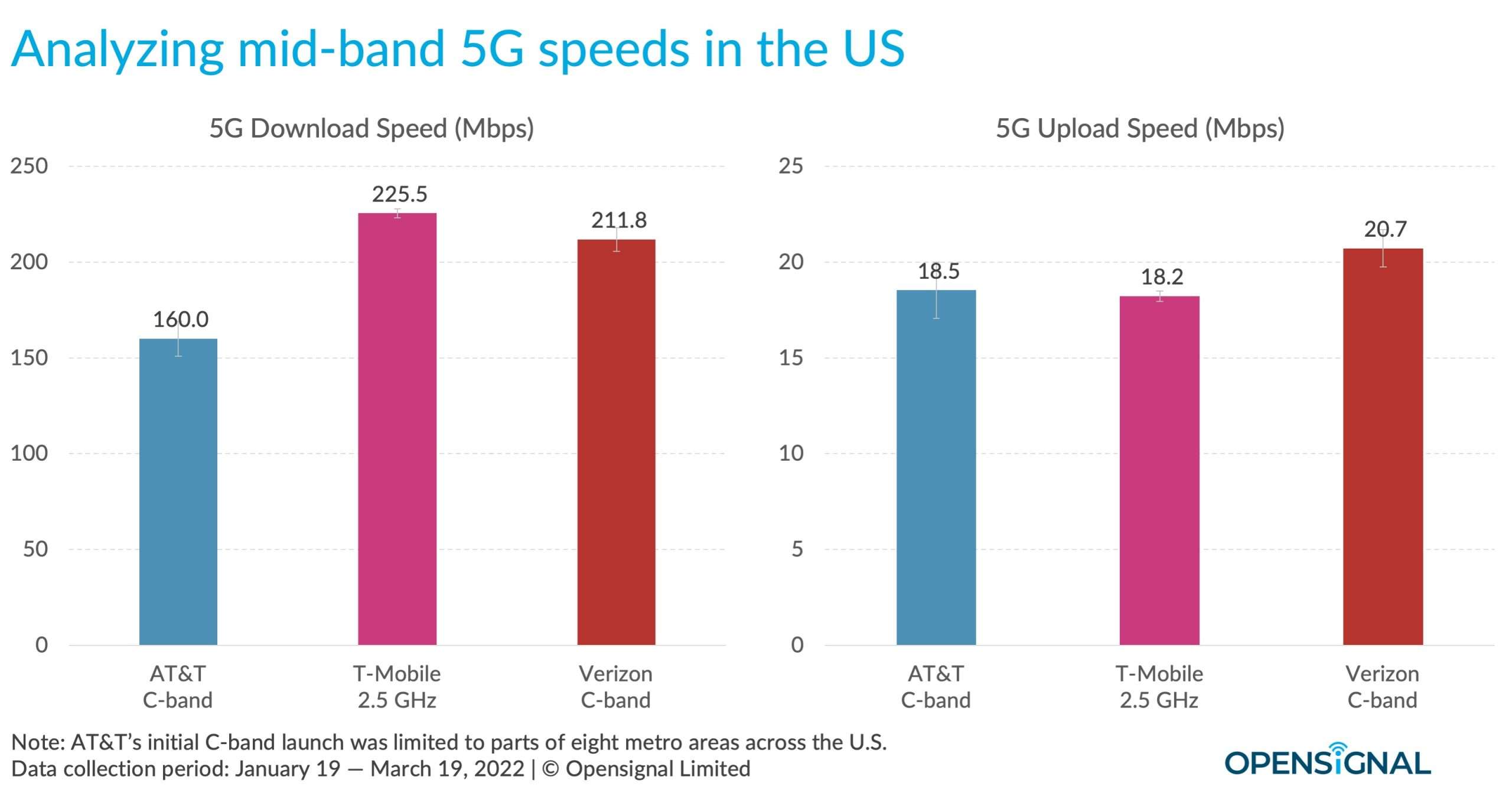
The Impact of 5G C-band on Mobile Internet Speeds
Ookla’s recent speed test data paints a compelling picture․ The deployment of 5G C-band is significantly altering the mobile internet landscape․ Faster download and upload speeds are becoming increasingly common․ This improvement is transforming how we use our mobile devices, impacting everything from streaming video to online gaming․
Understanding 5G C-band and its Advantages
Before diving into the Ookla data, let’s understand what makes 5G C-band so special․ It operates in the 3․7 GHz to 4․2 GHz frequency range, offering a compelling balance between coverage and capacity․ Unlike lower-frequency bands, C-band provides the bandwidth necessary for high-speed data transmission․ This means significantly faster download and upload speeds compared to previous generations of cellular technology, including 4G LTE․ The increased capacity allows more devices to connect simultaneously without experiencing performance degradation․ This is crucial in densely populated areas where network congestion is a common issue․
Speed Comparisons: C-band vs․ Other Technologies
Numerous independent tests, including those conducted by Ookla, show a remarkable difference in speeds between 5G C-band and other technologies․ While 4G LTE provides adequate speed for many users, 5G C-band offers a substantial leap forward․ This improvement is particularly noticeable in data-intensive tasks such as streaming high-definition video or downloading large files․ The latency, or delay, is also significantly lower, leading to a more responsive and fluid user experience․ This is particularly beneficial for applications requiring real-time interaction, such as online gaming and video conferencing․
The speed improvements aren’t just theoretical; real-world users are experiencing the benefits․ Users in areas with 5G C-band deployment report significantly faster download and upload speeds, reduced latency, and a more reliable connection․ This translates to a better overall mobile experience, enhancing productivity and entertainment․
Ookla’s Data: A Closer Look
Ookla, a widely respected provider of internet speed testing services, has consistently monitored the performance of 5G C-band networks․ Their data provides compelling evidence of the technology’s impact․ They analyze millions of speed tests performed by real users across the globe, providing a robust and reliable dataset․ This data is not just limited to peak speeds; it considers average speeds, consistency, and network latency, offering a comprehensive picture of the user experience․
Ookla’s findings consistently show that 5G C-band delivers significantly faster download and upload speeds compared to other cellular technologies․ The improvement is not marginal; it’s a substantial leap forward, significantly impacting the capabilities of mobile devices․ This advancement opens up new possibilities for mobile users and applications․
Regional Variations in 5G C-band Performance
It’s important to note that the performance of 5G C-band can vary depending on several factors․ These include the specific network deployment, the density of users, and the geographic location․ Ookla’s data allows for a granular analysis of these regional variations, providing valuable insights into the deployment effectiveness and potential areas for improvement․ Understanding these variations is crucial for network operators to optimize their deployments and ensure consistent performance for their users․
In some regions, 5G C-band performance is exceptionally high, exceeding expectations․ In other areas, the performance is still improving as networks continue to be optimized and expanded․ This highlights the ongoing nature of 5G deployment and the constant evolution of the technology․
The Future of 5G C-band
The future of 5G C-band looks bright․ As more network operators deploy this technology, the coverage area will expand, bringing the benefits of high-speed mobile internet to a wider audience․ This will lead to further advancements in various sectors, including healthcare, education, and entertainment․
Further technological advancements will continue to enhance the performance of 5G C-band․ Improvements in network optimization techniques, antenna design, and spectrum management will further boost speeds, reliability, and capacity․ This will create a virtuous cycle, leading to even more innovative applications and services․
Impact on Different Industries
The impact of 5G C-band extends far beyond individual users․ Several industries stand to benefit significantly from this technology․ The automotive industry, for instance, can leverage 5G C-band for advanced driver-assistance systems and autonomous driving․ Healthcare can utilize the technology for remote patient monitoring and telemedicine․ The educational sector can benefit from improved online learning experiences and access to educational resources․
- Automotive: Enhanced driver-assistance systems, autonomous driving capabilities․
- Healthcare: Remote patient monitoring, telemedicine, improved medical imaging․
- Education: Enhanced online learning experiences, access to educational resources․
- Entertainment: High-quality streaming, immersive gaming experiences․
- Manufacturing: Improved automation, real-time data analysis․
Addressing Challenges and Concerns
Despite the significant advantages of 5G C-band, there are challenges to address․ The cost of deploying and maintaining this technology can be substantial․ Furthermore, ensuring equitable access across different regions is crucial to avoid creating a digital divide․ These issues require careful consideration and collaboration between network operators, regulators, and policymakers․
Another concern is the potential for interference with other technologies operating in nearby frequency bands․ Careful planning and coordination are necessary to minimize such interference and ensure the efficient use of spectrum resources․ Addressing these challenges proactively is crucial for the successful and sustainable deployment of 5G C-band․
Spectrum Allocation and Management
Efficient spectrum allocation and management are essential for maximizing the benefits of 5G C-band․ Collaboration between government agencies, industry stakeholders, and international organizations is crucial to develop effective policies and regulations that promote fair and efficient spectrum use․ This will ensure that the technology benefits society as a whole․
The effective management of the radio spectrum is also critical․ This requires sophisticated tools and techniques to monitor spectrum usage, identify interference sources, and optimize network performance․ Advanced spectrum management systems can help to improve network efficiency and reduce interference, maximizing the benefits of 5G C-band․
- Careful planning and coordination to minimize interference․
- Efficient spectrum allocation and management policies․
- Addressing cost considerations for deployment and maintenance․
- Ensuring equitable access across different regions․



